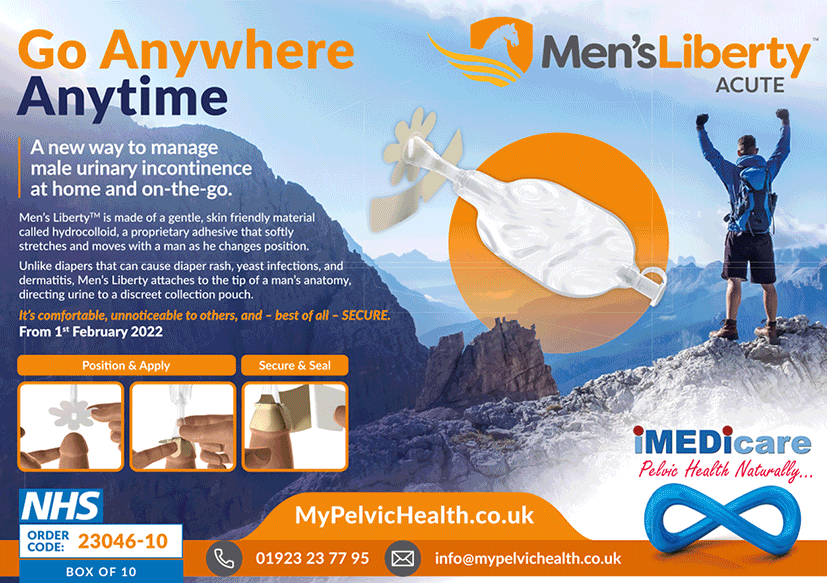We are all aware of the importance in reducing our climate footprint, but how can we be more sustainable when it comes to incontinence products?
Definition of sustainability: using resources responsibly so they are available for future generations, while doing as little harm to the environment as possible.
Urinary incontinence is a common problem, thought by the NHS to affect millions of people. If you or someone you care for has a continence problem, it’s important to see a medical professional as there are lots of options which can improve or eliminate the problem. However, this isn’t always possible, so whether we’re talking about the short or long term, using the correct products for incontinence management is vital for physical health, independence, and quality of life.
So how can we combine greater awareness of sustainability with proper management of the condition?
Disposable products are the norm
Currently, some of the most common incontinence management products are:
- Absorbent pads and pants: are worn inside underwear to soak up urine. These are most commonly single-use. They have a have a special layer to draw urine away to keep your skin dry, and they come in different sizes, shapes and absorbencies.
- Intermittent catheters: are inserted into the bladder to allow it to empty and are then removed.
All of the above are effective and convenient, but are not all suitable for everyone. They also tend to be designed to be disposed of after one use. They also usually contain non-biodegradable elements, with other sustainability issues to consider, such as the carbon footprint of manufacturing and distribution.
‘Sustainable healthcare is a major goal both worldwide and for the NHS, where single-use products are a key contributor to plastic waste.”
Sustainable Development Unit, 2020 (UK Government Body)
Making incontinence products more sustainable
A more sustainable approach to incontinence management includes reducing the amount of single-use products, recycling, and finding longer lasting, multi-use alternatives. Thankfully, there is innovation happening within this area.
Multi-use options include:
- Washable incontinence underwear: these can be washed and re-worn multiple times.
- Female bladder support devices: they are inserted into the vagina to support the bladder neck and can reused.
- Male urethral control devices: these are wrapped around the penile shaft to restrict urine flow.
- Male body worn urinal: they have an inner receptacle lining that drains urine from the penis and direct-connect leg collection bag.
These options are more sustainable because they result in fewer products being thrown away and fewer products being produced in the first place. They can also be more cost-effective than the disposable products.
Hygiene, comfort, and quality of life
For people with continence difficulties, hygiene, comfort and quality of life are the priorities.
Appropriate use of the right product for the right person reduces the likelihood of skin irritation, dermatitis, rashes, skin infections and moisture lesions. It is also important to consider effective containment, lifestyle, maximising independence and personal preference.
Pros & cons of disposable pads
- Disposable, single-use pads usually need to be changed several times during the day, when the pad reaches its absorbency capacity (some have a wetness indicator to guide changing), or is soiled. This has a time and cost implication.
- Disposable pads are often designed to reduce odour and lock urine and moisture away from the skin. Some new generation products have devices that alert an app when the product needs to be changed.
- They come in many sizes and designs, meaning that there should be a product available for all levels of incontinence and different body shapes.
- They are widely available.
- They are non-recyclable for hygiene reasons and are often made with non-biodegradable materials.
Pros & cons of washable products
- Washable products usually require a larger initial financial outlay.
- They require individuals to have access to a washing machine, and appropriate facilities to dry them, such as a tumble drier, well-ventilated house, or access to outside drying. This can be time consuming for the individual or their carers.
- They have a reduced carbon footprint thanks to their multi-use nature: less production, and less waste.
- New innovation means that a wider range of washable products are available. Like disposables they come in a range of sizes, designs and absorbencies which are discrete and effective.
- Washable products may be worn throughout the day and night, like disposable products.
Most washable products are made from soft natural fibres, so are comfortable.
Support to make the right decision
For the millions of people who are affected by incontinence, management products are an important part of their lives and ensure dignity, self-esteem and allow them to continue with their usual activities.
There are lots of things to consider when deciding on the best option for anyone managing a continence issue. It is important to be aware that treatment is possible for many conditions. Where this is not an option, or is not immediately possible, it is helpful to know that there are other products than just the disposable pad that has been available for many years. Happily, research and development continues to explore innovative and increasingly sustainable alternatives.
Your healthcare professional can provide more advice, information and support
This article is part of the Education Spotlight on Urinary Incontinence, supported by iMedicare. You can also read more about constipation in our information library here.



Comments are closed